UPDATE: When the new FOX 38 was announced in the depths of a global pandemic, we were only able to get quick first impressions due to lockdowns. However, we’ve now ridden multiple FOX 38 forks in multiple locations, from lift-served bike parks to the steepest, rootiest gnar. Our conclusion? FOX have created an exceptional fork, bringing DH performance to a single crown package – then we encountered a problem that’s hard to ignore.

The development of the new FOX 38 was perhaps one of the world’s worst kept secrets, the distinctive bleed valves and round crown have already been well publicised in spy shots, used by racers in prototype form on the front line of last year’s EWS. However, In terms of new products, it’s fair to say that FOX has been pretty quiet over the last two years, with no major overhauls since they released their GRIP2 damper. With the new FOX 38 (and the new 2021 FOX 36, DHX2 and X2 shocks) it appears that FOX has been putting that engineering break to good use, with some major overhauls. FOX have now ‘downgraded’ their 36 chassis to an ‘all-mountain’ fork (in shorter 150-160 mm travel options) and are introducing the FOX 38 for all enduro and ‘heavy-duty’ eMTB duties, in fact everything between 160 – 180 mm of travel. Bigger, stiffer and with new internals, the FOX 38 FLOAT is now the brand’s big-hitter single clamp.

The new FOX 38, all you need to know in one paragraph
There is a lot of tech inside the new FOX 38, so if you just want the essentials without any marketing spin or tech deep-dives, here’s all you need to know in one paragraph. The new FOX 38 has 38 mm stanchions and is FOX’s new fork for enduro duties with 160-180 mm of travel. It will be available in Factory, Performance Elite, Performance, and E-Bike models with GRIP2 and GRIP dampers, in 27.5 and 29” options. FOX will now only be using tapered steerers on their gravity forks, with no 1 ⅛ steerer option. Besides the extra-fat stanchions it has a new rounded arch and internally ovalised steerer tube for increased strength and stiffness. The fork features a new floating axle design for perfect alignment with your hub. Internally the FOX 38 has new air channels that allow air and oil to migrate easier inside the fork helping lubrication and spring performance. Bleed ports on the back allow for atmospheric air pressure equalization. The air spring piston now sits inside an floating air sleeve, instead of inside the fork stanchion, allowing the fork to flex without binding and decreasing seal head friction. FOX have revised the GRIP2 damper, adding VVC (Variable Valve Control) to the High Speed Compression circuit. The fork weighs 2213g (our 170 mm 29er FACTORY model) and costs from €1259 to €1589.
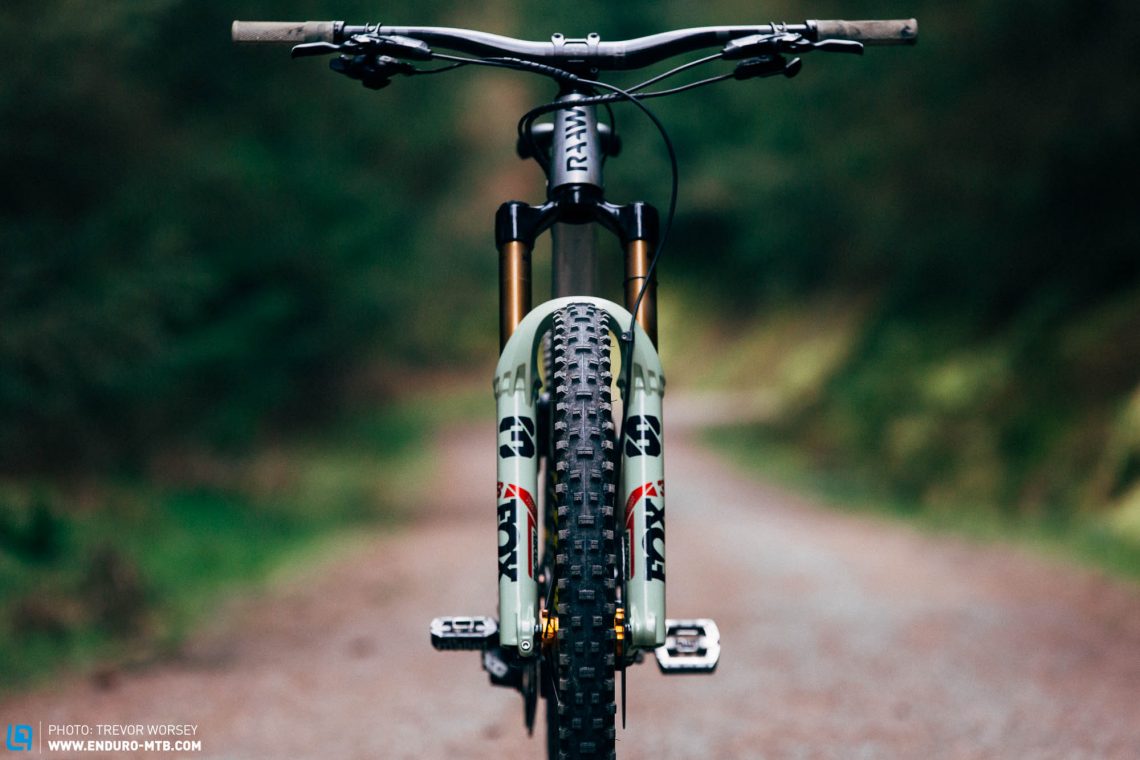
New FOX 38 features at a glance
- New chassis with, lower leg bleeders, air/oil channels, floating axle, and new arch shape to improve head tube clearance
- Tapered and elliptical steerer tube
- GRIP2 damper now with VVC (Variable Valve Control), and reduced 8-click HSC and HSR adjustment
- Travel option(s): 160mm-180mm
- 31% stiffer transverse shear, 17% stiffer fore/aft and 38% torsionally stiffer than 36
- Wheel size(s): 27.5″ and 29″
- Offset(s): 37mm, 44mm and 51mm
- 58mm crown diameter to match modern frame shape profiles
- Optional mud guard
- Available in Factory, Performance Elite, Performance, and E-Bike models with GRIP2 and GRIP dampers
- Weight: 2213 g (our 170 mm x 29” model with a 20 cm steerer)
- Price: EUR €1259 – €1589
What’s with the new FOX round arch?
The first change that is immediately apparent is the new round arch, in place of the usual squared-off design as featured on the outgoing range. According to FOX, the new round arch is not a design element, it was created using FEA (Finite Element Analysis) to measure the way the forces travel through the structure of the fork. Love it or hate it, this is what the FOX engineers say is the best possible design to get maximum strength in the chassis. FOX is not aiming to be the stiffest, but the most comfortable. Reducing fatigue on the forearms, with a little compliance. Eagle eyed readers will notice that the arch now sits noticeably further from the fork chassis, requested by riders who wanted to run a reach-adjust headset and so needed increased clearance.


The new FOX 38 is stiffer than a 36
In the pursuit of more performance and chassis stiffness, FOX have increased the stanchion size to 38 mm on the FOX 38, sitting in the middle ground between a FOX 36 and a FOX 40. FOX have also ovalised the interior of the steerer tube, while the outside diameter is round, the inside diameter is ovalised, thicker at the front and back. Combined with a new crown and the new round arch, FOX claim the 38 model has a 31% increase in transverse shear (bending), is 17% stiffer fore and aft (think hard braking) and 38% torsionally stiffer than a 36. This means that the new 38’s, and the 36’s, are now certified for use with 230 mm front rotors (click for more info).
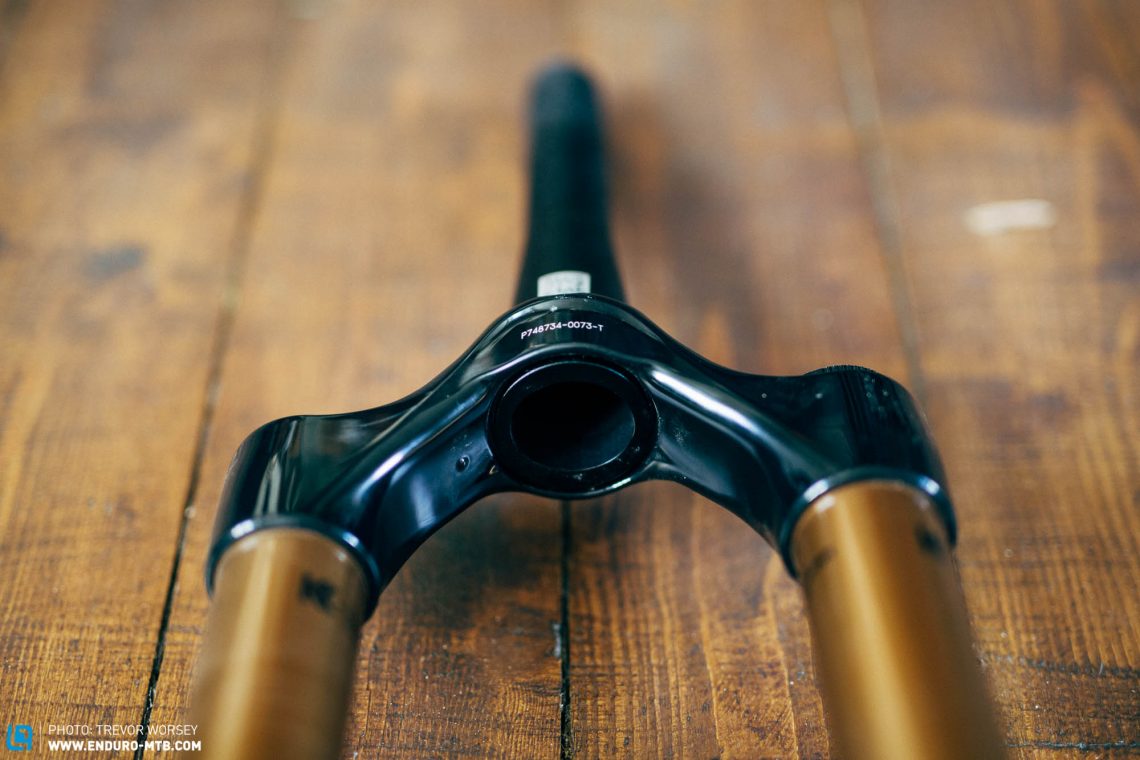
Chassis stiffness is only one half of the equation, what is also important with any fork is that the fork legs maintain a good alignment. There’s no point in manufacturing to a high tolerance if the dimensions of your front hub are narrower or wider than the standard requires, splaying or pinching your fork legs and reducing the effectiveness of the fork. FOX has developed two new axle designs to eliminate this. The 15QR tool-free quick release axle uses a floating design with a ‘set-once’ alignment spacer, where you first preload the hub with the alignment spacer, once tightened with a pinch bolt you now have the perfect fit between the fork and your personal hub. With the lighter but non quick-release Kabolt-X, the axle end is free to float inside the fork leg, to ensure perfect alignment, you compress the fork 50% and tighten the 6 mm pinch bolt. Both the new axles ensure the legs are always inline, and should not bind. There will no longer be a 20 mm option, only 15 mm.

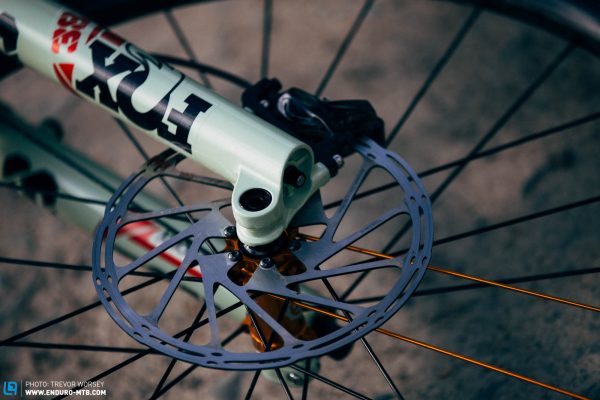
What are the air bleeders on the back of the FOX 38 for?
Externally, you cannot miss the two air bleeder valves on the back of the FOX 38 lowers, internally, behind these valves small channels allow air to migrate through the fork as it compresses and extends, opening up new volumes. As the fork compresses and extends, this very fast airflow draws oil up to the bushings and foam rings to help lubricate the fork. The channels also reduce pressure buildup in the lower part of the fork, which can inhibit the fork from reaching full travel. If you use lifts a lot, or travel to higher trails, the air bleeders allow you to equalise the internal pressure to the atmospheric pressure at the press of a button, so the fork will always feel the same, no matter the elevation.
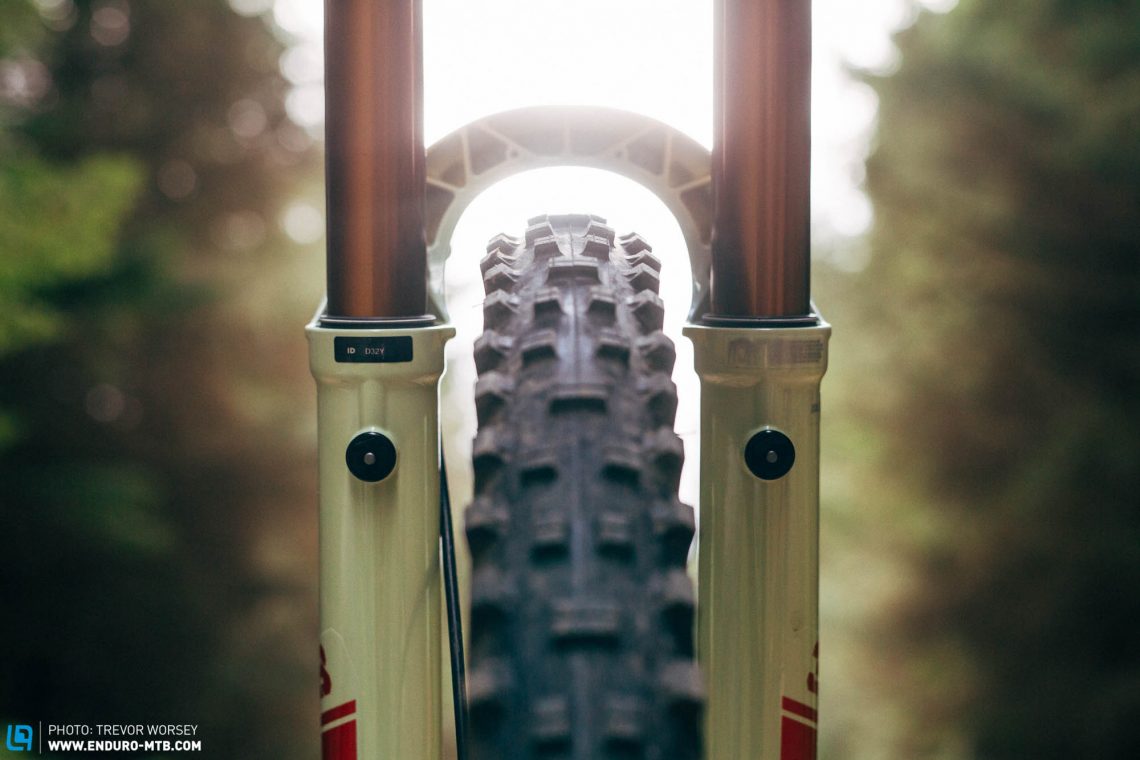
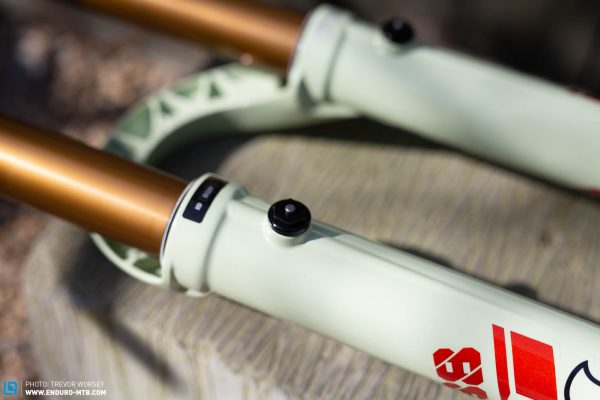

The FOX 38 has a new GRIP2 damper
The GRIP2 damper has also seen big changes in design (which will also feature on the new 2021 FOX 36) with the VVC (variable valve control) technology now being included on the high-speed compression side too. While hard to explain unless you have looked inside the fork, instead of a preload spring, VVC uses a rotating leaf spring to preload the high speed compression shim stack. As you rotate the dial, the leaf spring arms rotate around a support that ‘spirals’ outward, the more the spring travels around the spiral the more the leverage curve reduces. Instead of preloading a fixed spring, VVC changes the fulcrum of leverage on the shims, reducing the initial threshold to overcome the spring tension and giving a smoother blow off. The effect is more like revalving the entire shim stack than increasing the preload. FOX have also reduced the number of clicks on both the High-Speed Rebound and High-Speed Compression adjusters to 8, to simplify setup.
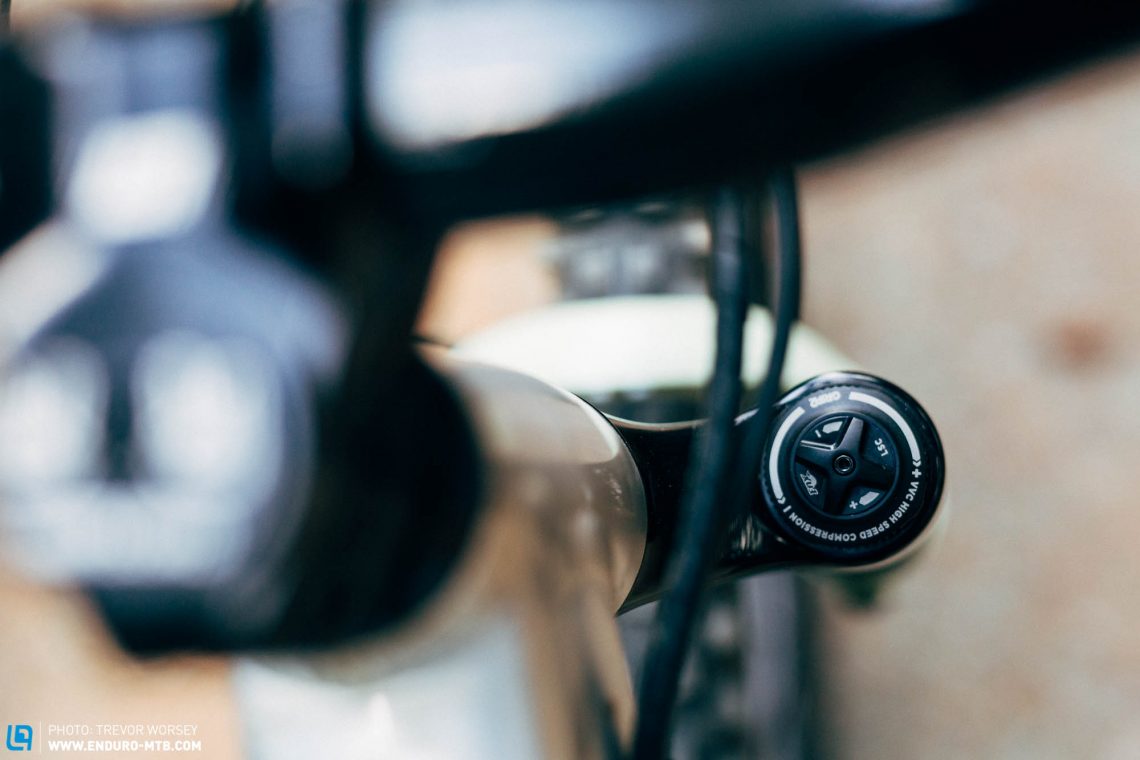
Changes to the FOX 38 EVOL air spring
There have also been some big changes inside the FOX 38’s air spring. Unlike most forks (including the 36) where the spring piston runs down the inside diameter of the fork stanchions, FOX now uses a floating machined air sleeve. This air sleeve is free to move slightly inside the stanchion, so the piston can maintain a smooth path even if the fork is twisting. This results in improved function when experiencing torsional loads like off-camber sections and heavy braking, The addition of a sleeve means the inside diameter is reduced, and the 38 uses the same piston head size as a FOX 34. The narrower sleeve means the fork runs on slightly higher pressures, but the advantage is that the seal diameter is also smaller so the seal friction is less.
FOX 38 Initial Setup
Anyone coming off a FOX 36 will be surprised at the high pressure they need in the FOX 38 air spring. The sleeved air spring of the FOX 38 reduces the internal spring dimensions down to that similar to a 34, and as such we opted for the recommended 93 Psi starting pressure for our 80 kg rider weight, with 2 clip-on spacers installed internally which gave 17% sag (Fox suggest 15% for a firm ride and 20% for soft). We started with the recommended setting of 5 and 4 clicks of LSR and HSR rebound respectively, and 5 and 10 clicks of HSC and LSC respectively. Initial test rides with this setup were impressive, the fork feels very stable and it’s a good general setup for DH tracks and tracks with lots of support for full compression hits. Moving to the steeper and more technical Tweed Valley enduro tracks, we ended up on an optimised setup using a slightly higher 95 psi in the air spring (The small 2 psi increase was bracketed down from 98Psi which felt too firm) for support, but less HSC and LSC (12 and 6 clicks from fully closed respectively), which improved small bump compliance for maximum grip on the slick, rooty trails while still remaining supportive.
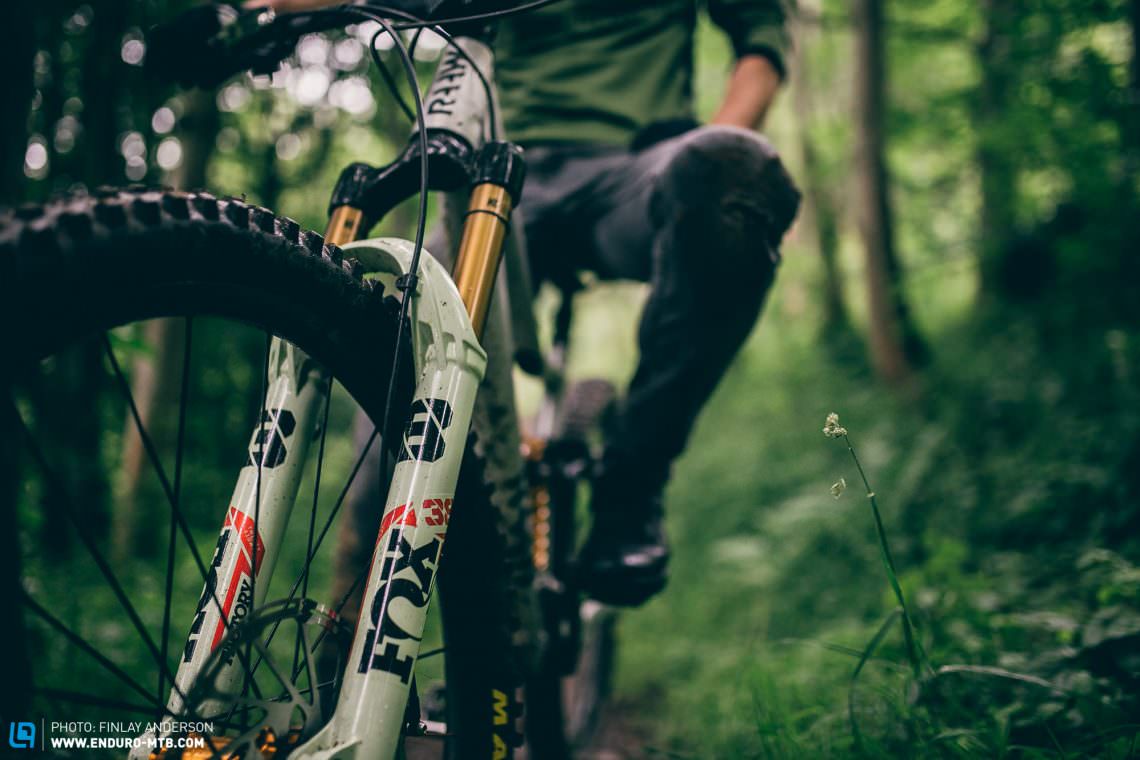
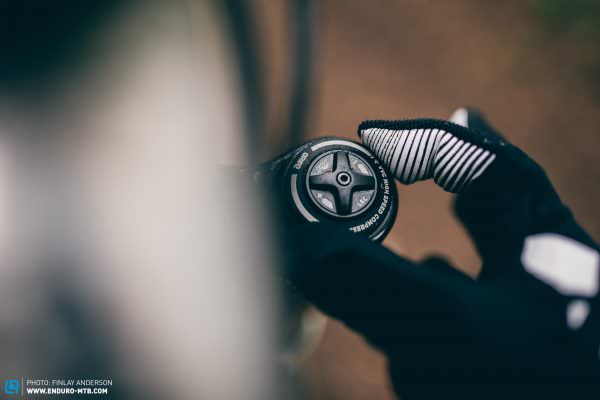

FOX 38 VVC GRIP2 Damper and Air Spring performance
One of the main changes to the FOX 38 GRIP2 damper is the shift to VVC on the high speed compression side. Now with an 8 position VVC high speed compression adjuster, the decreased range simplifies fork setup. We would say that the range of adjustment seems a little lower than the older system, but all testers found a suitable setting within the range. There’s no question that the compression circuit is very supportive, and we were able to run less LSC than normal to maximise small bump sensitivity (though not fully open as the HSC needs some LSC to activate the shim stacks) while balancing the end of stroke progression with the HSC to avoid hard bottom outs.
Very light riders may struggle with the high damped rebound, we found that our 80-90kg testers were operating at the extremes near to fully open, suggesting that lighter riders running lower pressures may struggle to get the fork responding fast enough/ We were also a little disappointed that on one of our forks, the low speed rebound adjuster ‘clicks’ are VERY hard to feel, as the rest of the adjustment detents are very positive. One peculiarity we were not expecting was after hard runs, if we pressed the air bleeders, a small volume of oil escaped which made us a little concerned in case it ran down the leg into the brake pads. We spoke to FOX about this and they state that a labyrinth seal should prevent oil from escaping and that any tiny amounts that may get past will be wiped away by the rider’s gloves.
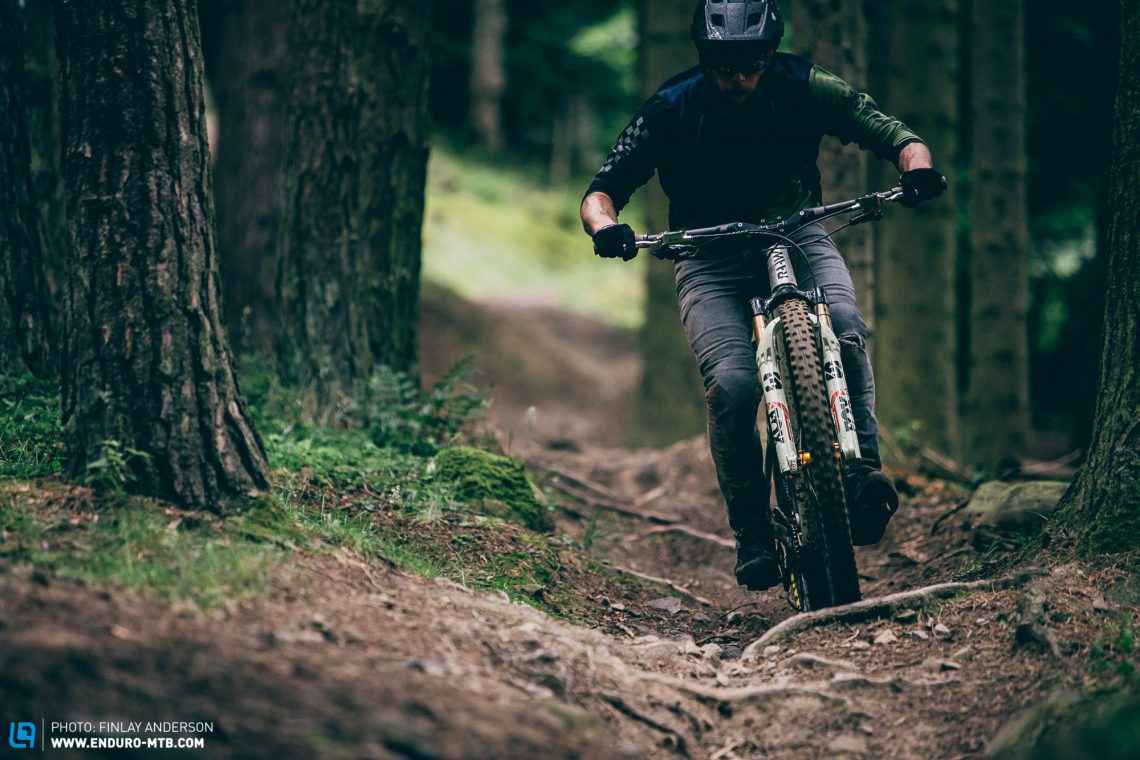
FOX 38 Factory riding impressions
Once restrictions eased, we hit the trails to give the FOX 38 a proper thrashing. Before testing, we found it hard to position the need for a FOX 38 in the enduro sector, the FOX 36 platform is well proven and is hardly undergunned. However, after more time on the FOX 38, we have found that the 200g weight penalty results in significant performance benefits, more grip, more support and improved steering control. Compared to the FOX 36, in situations where the fork is fully loaded, like hard braking, or powering through G-out turns the FOX 38 shines. Steering inputs are sharper and easier, feeling like your bars are a touch wider.
The advantages of the FOX 38 are most obvious when the fork is loaded heavily from one side, the air spring remains very sensitive with no binding. We were surprised to find we could hold higher lines through fast off-camber roots without the bike losing traction. How much of this is to do with the increased chassis stiffness, the ‘floating’ air spring sleeve or the new KaboltX pinch bolt design that keeps the legs running straight is unknown, but the FOX 38 delivers super smooth performance, no matter the angle or stress on the fork. Under hard braking with a big 225 mm rotor, the front axle is more stable with less for/aft flutter. Speaking of axles, the new KaboltX floating axle is a smart solution to ensure the forks are aligned correctly with the hub, however, you have to be careful to clamp the pinch bolt correctly once, as leaving it undone will reduce the torsional strength of the fork but not be immediately obvious as the axle is still held in place – something to be aware of for riders used to the simplicity of the 36’s QR thru-axles. We found that compared to the FOX 36 on DH trails, we were able to push harder, brake harder and trust rooty landings more. While we’re not recommending that everyone trades in their now skinny-ass FOX 36 for a FOX 38, if you ride bike parks or proper downhill tracks then the FOX 38 is a better choice.

And now for the big question that will be asked by riders looking for big-hit performance, the battle of the 38’s, FOX 38 vs RockShox ZEB? Retailing for €1089, the RockShox ZEB Ultimate easily undercuts the €1589 FOX 38 Factory on price, and for many, this will be the deciding factor. The ZEB Ultimate takes the win on setup too, allowing you to find a good setup with fewer adjustments required. However, once set up, we found the FOX 38 the higher performing fork. While the big-hit control and supportive ride heights are hard to differentiate on the trail, we found the FOX 38 feels more sensitive and smooth over small bumps, finding more grip over roots and flat corners. Without putting the chassis’s through stiffness tests on a rig, we feel the FOX 38 chassis stiffness sits somewhere in between a Lyrik and ZEB, a good sweet spot. While not as brutally stiff as the RockShox ZEB, with the possible exception of eMTB riders, most riders will find the FOX 38 delivers a precise ride with less vibrations passed to the rider’s hands through rock gardens. Overall, the ZEB feels like a highly beefed up enduro fork, while the FOX 38 feels like a slimmed-down DH fork with improved sensitivity and grip. We will have more conclusions at the end of our fork group test which is coming very soon.

Why is our FOX 38 creaking?!?
So, performance-wise, the FOX 38 is a triumph, but we encountered a problem. One of our four test forks quickly developed a loud creak from the stanchion/crown interface under hard braking and big hits. Swapping the fork between bikes isolated the noise to the fork. Needless to say, the noise is very unnerving, undoing all the confidence gained from the burly chassis. We have also ridden with a number of other riders and observed a small proportion of their aftermarket FOX 38’s creaking too. This really is unacceptable for such a high-performance product. We put the issue to FOX for comment, and while they would not comment on the source of the creaking issue, they stated that they would aim to replace the upper steerer/stanchion assembly of any creaking forks within 48 hours under warranty. We went through the warranty process with our creaking FOX 38, which took around a week. After thrashing the replacement fork in the bike park there have been no further issues with creaking so, from our experience, it looks like FOX are on top of the issue.
Conclusion
The new FOX 38 is more than just a beefed-up 36, instead, it feels more like a mini 40 with sublime damping and support. Running 170 – 180 mm travel, it’s the ideal complement to the latest hard-hitting, gravity focussed 29er enduro and eMTBs. Early issues with creaking cast a bit of a shadow, but FOX were quick to replace our problem fork with no further issue. Overall, for those looking to push their riding very hard in the bike park, the FOX 38 is the best performing enduro fork on the market we’ve currently tested.
For more information head to ridefox.com
Did you enjoy this article? If so, we would be stoked if you decide to support us with a monthly contribution. By becoming a supporter of ENDURO, you will help secure a sustainable future for high-quality mountain bike journalism. Click here to learn more.
Words: Photos: Trev Worsey, Finlay Anderson









